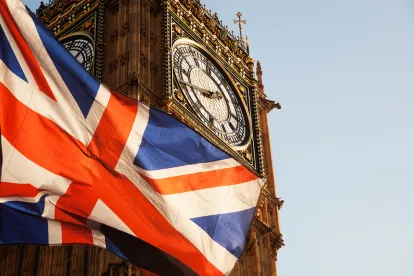Part One
The Corporate Insolvency and Governance Bill (the Bill) is passing through parliament at the moment. Some of the measures included in the Bill are in response to the current pandemic and will provide temporary easements for company directors from an acute economic downturn. Other measures have been under consideration for a while, and will be permanent.
Our restructuring colleagues provide some insights into the proposed new measures on their blog page.
The pensions/insolvency nexus has long been a complex interface. The key areas where the pensions and insolvency worlds collide in statutory terms are the employer debt regime under section 75 of the Pensions Act 1995 and the trigger events for entry to the Pension Protection Fund (PPF) under the Pensions Act 2004. Many readers will be familiar with these and may initially derive some comfort from the fact that, as currently drafted, the Bill makes no changes to either regime. However, appearances can be deceiving and the proposals contained in the Bill throw up some interesting pensions angles. Today and tomorrow, we will consider two of the new permanent measures, which could affect pension schemes. We start with a look at the new “moratorium” process proposed by the Bill.
Moratorium
The purpose of the new moratorium process is to give a company some breathing space. It can be used where it is “likely that” the moratorium would result in the rescue of a company as a going concern. This could be by way of a restructuring plan or refinancing package, or any other means – there is no requirement to stipulate the proposed method by which the rescue is to be achieved. For a UK company, the moratorium is initiated by the directors simply filing documents at court. It does not require creditor or court approval. However, a court order is required for an overseas company or a UK company that is already subject to a winding-up petition.
The new moratorium process would allow directors to continue to run the company under the supervision of an insolvency practitioner (called a monitor, who is obliged to tell creditors, which would include pension scheme trustees, that the moratorium is in place). The directors would retain much more control than if a traditional administrator had been appointed. The moratorium would automatically expire 20 business days beginning with the business day after the moratorium becomes effective. The period could be extended by a further 20 business days (without creditors’ consent) or up to a further 12 months with creditor consent and/or a court order.
Below is a brief summary of some of the principal features of the moratorium.
-
The company would have a payment holiday in respect of certain pre-moratorium debts that have fallen due or would fall due during the moratorium period. The payment holiday would capture deficit recovery payments to a defined benefit pension scheme.
-
Secured creditors would be unable to appoint an administrator during the moratorium period. Floating charge holders would also be unable to crystallise their charge.
-
In some circumstances, a fixed charge might be challenged as instead being a floating charge. If successful, this would mean that the creditor would not receive the value of property realised, with the sale proceeds becoming general company funds.
-
Creditors would be unable to enforce security over any property of the company without the permission of the court.
-
The Bill would allow a company to sell property over which there is a fixed charge, as though the charge did not exist, if the court agrees. The charge holder must be paid the market value of the asset sold.
-
If a company becomes insolvent within 12 weeks of a new moratorium process ending, some pre-moratorium debts (but not unsecured pension scheme deficits) would be elevated to super-priority status, further diluting or even eliminating the amount available to the pension scheme/PPF.
See our blog for more on the new moratorium process generally.
Summary of key pensions implications (based on the draft Bill)
-
Directors can initiate a moratorium without trustee or court consent. Directors may be tempted to take action without notifying trustees in advance if they fear the trustees may take pre-emptive action (such as enforcement action under security agreements (if the company is already in breach) or triggering the winding-up of the scheme).
-
Where company directors or senior executives are also pension trustees, this significantly enhances the conflicts risks for the trustees generally. Trustees may be in breach of trust if they fail to share critical information material to the fiduciary duties of the board with their co-trustees.
-
Depending on the precise wording of scheme rules, a moratorium could trigger the winding-up of a scheme which would in turn bring the section 75 employer debt regime into play. Companies should check this before initiating a moratorium. Trustees should check this if they are told that a moratorium has commenced.
-
The moratorium means the company has a payment holiday for deficit recovery payments to defined benefit schemes. Schemes that rely on company contributions to pay monthly pensions may need to disinvest cash urgently to avoid an embarrassing payroll disaster. Trustees that have group company guarantees or letters of credit in place (whether in PPF standard form or otherwise) may wish to initiate claims for the unpaid contributions from their guarantors.
-
The intention appears to be that contractual pension contributions for current employees would continue but there is some ambiguity in the drafting which we hope will be resolved before Royal Assent is given. In particular, it is unclear if contributions to personal pension schemes will be required to continue.
-
Trustees will not be able to enforce any security they have previously put in place or take any legal action against the company during the moratorium. This effectively eliminates the bargaining position of pension trustees during a moratorium, as the ability to make a statutory demand (with the potential to engage the section 75 debt regime against the employer) would become a meaningless threat.
-
Fixed charges may be more susceptible to challenge. If trustees have any fixed charges they may wish to get these reviewed to ensure that they understand the risks.
-
More generally, trustees may wish to discuss with their covenant advisers whether the weakening of their legal position by the moratorium regime has an impact on the covenant assessment.
-
The PPF may review the levy credit it gives for contingent assets and potentially update its standard form documents.
-
If a company becomes insolvent within 12 weeks of a moratorium ending, the recoveries against any unsecured pension debt will likely be impaired or eliminated by the super-priority status given to other debts.
As the Bill is still passing through parliament, it is possible that some details will change slightly, but the framework is basically set. As already noted, the Bill as currently drafted does not trigger a PPF assessment period or engage the section 75 debt regime. That said, there is some support in the House of Lords for the Bill to be amended so that the moratorium process would trigger a PPF assessment period. This would be a seismic change which could result in large numbers of pension scheme members relying on PPF compensation in future. However, this may inadvertently limit the attraction of a moratorium if it also triggers the section 75 employer debt regime or the potential for The Pensions Regulator to consider exercising its anti-avoidance (or “moral hazard”) powers.
Tomorrow, we will consider the new restructuring process in the Bill and its likely effect on pension schemes.




 />i
/>i
